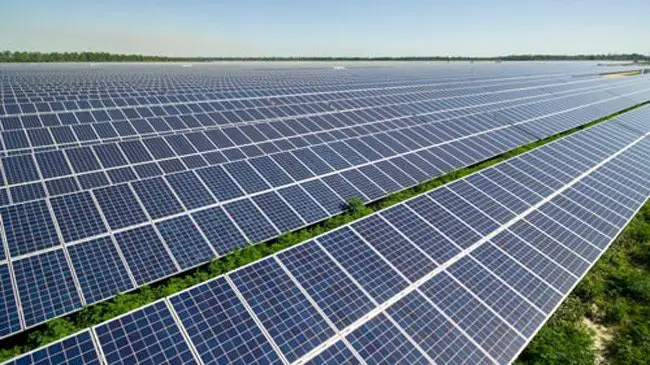
Florida Power & Light said Wednesday it plans a major expansion of solar-energy projects during the next decade, as the state’s utilities move forward with generating more renewable energy.
FPL said it will install more than 30 million solar panels by 2030, with solar facilities expected to be built across the state. The company, which plans to eliminate its last coal-fired plant by the end of this year, currently has about 5 million solar panels installed.
In a statement included in FPL’s announcement, Gov. Ron DeSantis said he supports such efforts amid continued increases in population and electricity use.
“We live in the Sunshine State and solar energy is a natural resource that should be seriously considered. FPL’s initiative is important,” DeSantis said. “As Florida’s energy needs continue to grow at a rapid pace, it is important that we diversify our energy resources. This is vital to the economic well-being of our state and quality of life for residents.”
The state’s utilities, including FPL, Duke Energy Florida, Tampa Electric Co. and Gulf Power, have undertaken a series of large-scale solar projects in recent years. For example, the state Public Service Commission last year signed off on two phases of a plan by Tampa Electric Co. to build solar facilities.
But the FPL plan announced Wednesday, dubbed by the utility as the “30-by-30” plan, would be a much-larger expansion. With the plan, FPL said it expects to be the largest utility owner and operator of solar generation in the country. The utility also said it is working to expand the capacity of battery-storage technology at the solar facilities.
“We’re a technology company that delivers power, and we’ve long believed in making smart, forward-thinking infrastructure investments to produce tangible, long-term benefits — cleaner air, lower electric rates and reliable service — for our customers and our state,” FPL President and CEO Eric Silagy said in a statement. “Now we’re taking our long-standing clean energy commitment to the next level. Bottom line, this bold, innovative plan is the right thing to do for our customers and for our fast-growing state, and we look forward to working with local and state officials and our regulators to make this vision a reality.”
But the Southern Alliance for Clean Energy, a group that has sometimes battled FPL on regulatory issues, took a more-cautious approach to Wednesday’s announcement.
“We welcome Florida Power & Light’s commitment to build more utility-owned solar in Florida, and we agree that increasing solar power in the Sunshine State is good news for consumers and the environment,” Stephen A. Smith, the group’s executive director, said in a statement. “As with any announcement, the devil is in the details. A commitment to 30 million solar panels does not clearly indicate the amount of power that will be delivered to Florida customers, but we project it will likely double their current stated goal of approximately 4,000 megawatts. While this is a positive jump in solar development, it’s important to note this will not make FPL a leader in solar watts per customer based on their size in the Southeast or the country.”
FPL spokesman Chris McGrath said the utility is projecting 11,000 megawatts of solar capacity by 2030.
That would theoretically be the equivalent of several natural-gas powered plants. Precise figures equating how many homes a megawatt can power vary when it comes to solar energy because, depending on sunshine as it does, it’s less predictable than fossil-fueled power plants. Nationally, the Solar Energy Industries Association estimates that current national average of homes powered by a megawatt of solar power is 164. The Florida average is closer to 125, according to the association. By that calculation, FPL’s expansion would result in the powering of some 1.375 million homes.
Currently, the association estimates, barely over 1 percent of electricity consumption in Florida is solar-powered.
FPL said it currently operates 18 large solar plants. McGrath said the utility has secured thousands of acres of land across the state for solar projects and will acquire thousands of additional acres as part of the 2030 plan. (FPL explored fields in western Flagler County, but ended up passing on them.) McGrath said it is too soon to specify the locations of future sites.
The Juno Beach-based company over the years has shifted away from using coal and oil to fuel power plants and relies heavily on natural gas, nuclear and, increasingly, solar. Its last remaining coal-fired plant, known as the Indiantown Cogeneration facility, is expected to be shuttered by the end of the year.
–Jim Saunders, News Service of Florida, and FlaglerLive
![]()





























Kevin says
Yes, the power company deserves credit for getting with the program and finally embracing solar power as the right option for the Sunshine State. In addition to development of central solar projects, the utility and the state should encourage consumers both residential and commercial to solarize their rooftops and parking lots for decentralized solar power as well. Consider if every new roof either new construction or replacement had a solar application installed where we would be in advancing the % of power generated from this non-polluting resource, FPL could still make money if they took the lead and championed the effort by leasing the systems to homeowners and commercial property owners,